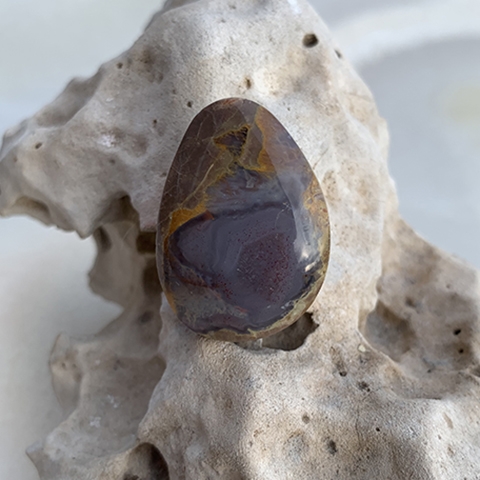Thundereggs
$12.00
Thunder eggs are spherical objects which form in some types of silica-rich volcanic rocks (e.g. rhyolites). As the volcanic lava cooled, trapped steam and other gases formed an expanding bubble. Silica and feldspar minerals often crystallise around the bubble or grow crystal fibres which radiate outwards from the its centre. These mineral-filled bubbles with a radiating structure are called spherulites.
Stock 1
Stone Type


Unique Thunder Egg Fossil Volcanic Agate pendant
nternal gas pressure forces the spherulite apart to form a central hollow, later filled with more minerals. Adjacent wedge-shaped segments of the cracked and expanding spherule move outwards and away from each other, helping form the typical star-shaped interior. Silica gels and clays filling the cavity can later dry out, shrink and crack, producing more internal structures such as interesting patterns of mineral-filled cracks.
Later, silica-rich solutions may enter the cavity and fill it with banded agate, chalcedony, clear quartz crystals or amethyst. Solutions of different composition seep in at various times, leaving behind several layers of different minerals. Well-known localities for Australian thunder eggs are Mt Hay, Eumundi, Agate Creek and Mt Tamborine, in Queensland, and Boggabri, Barrington Tops and Murwillumbah in New South Wales.






